 "Jake Stumph Racing" (jakestumphracing)
"Jake Stumph Racing" (jakestumphracing)
10/01/2015 at 09:30 ē Filed to: None
 5
5
 19
19
 "Jake Stumph Racing" (jakestumphracing)
"Jake Stumph Racing" (jakestumphracing)
10/01/2015 at 09:30 ē Filed to: None |  5 5
|  19 19 |
Does your car have body roll? Iím not talking a little bit, Iím talking A LOT of roll here.
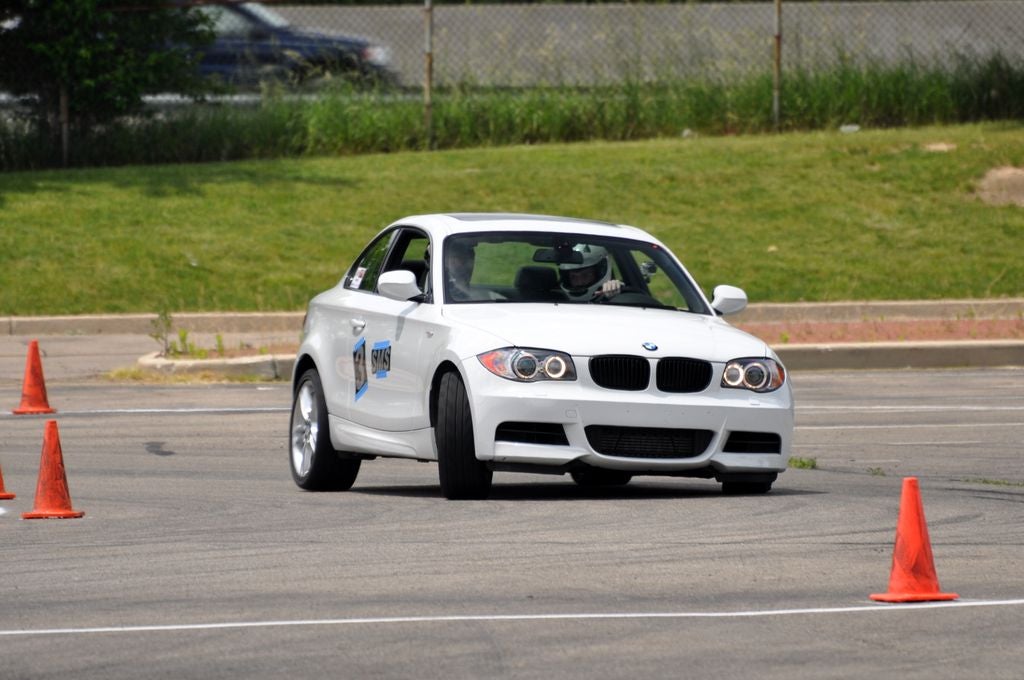
Sure, some amount of body roll is a desirable characteristic for good handling. If the car was too flat, or too stiff, it would handle like a rollerskate and work the tires too hard, ultimately reducing max grip.
But there is such a thing as too much roll, especially when your carís front suspension is of the McPherson-strut variety.
!!! UNKNOWN HEADER TYPE (MULTI-LINE BREAK?) !!!
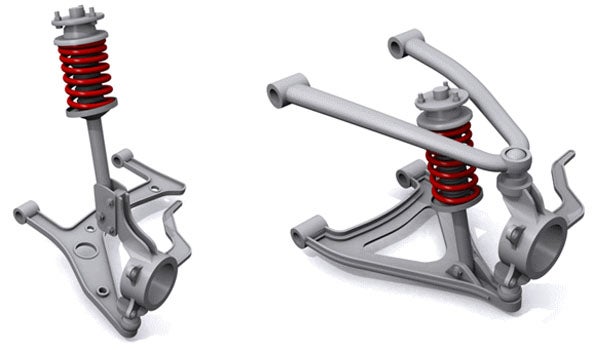
Pictured left is a typical Mcpherson-strut suspension. To the right is a typical depiction of a Double-wishbone suspension.
The McStrut configuration is relatively simple. The strut, which is a coil-over shock type of suspension is mounted to the strut towers up top, and to the steering knuckle at the bottom. The knuckle is then mounted to the lower control arm and in BMWís case, the tension strut. Instead of one large arm with a ďYĒ shape, that connects the front subframe to the knuckle, BMW prefers to use two indepedent arms to control the movement of the steering knuckle.
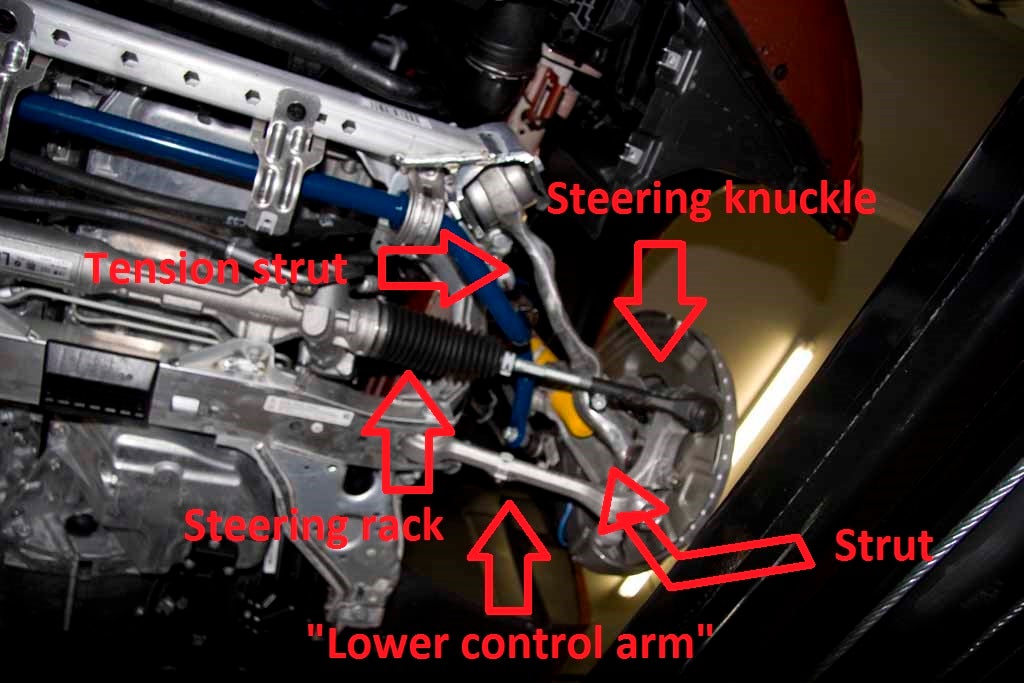
Image taken from 1Addicts, with my labels.
Note that there is no true upper control arm as seen on the Double-wishbone arrangement. One of the consequences of this is limited control over suspension movement.
What do I mean by this? Well, when the car is cornering, or it hits a bump, there is not just unidirectional movement. The forces exerted on the carís tire are multiple. As the car corners, the tire flexes, the suspension compresses and rebounds and the car leans, moving the carís weight along with it.
A double wishbone suspension, with links on either side of the steering knuckle, can better control wheel motion. This makes the steering more predictable, as the front wheels feel better located under load.
In addition to that is the big reason that McStrut car owners should be jealous: the dynamic camber curve.
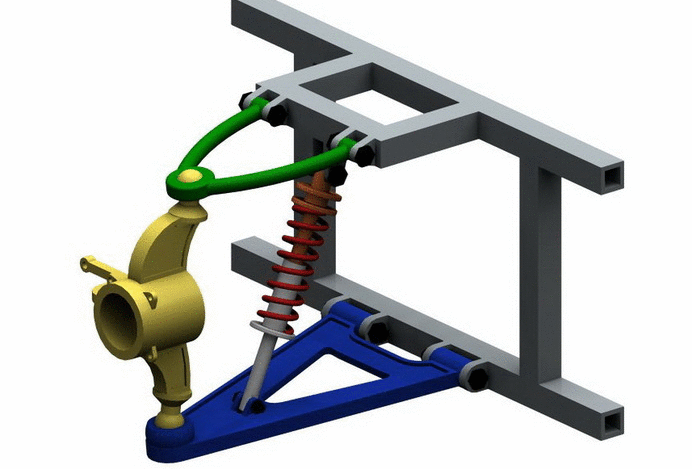
With the double-wishbone suspension, the upper control arm is shorter than the lower control arm. That means that when the suspension compresses, and the shock goes through itís suspension travel, the upper arm moves more than the lower arm, tilting the steering knuckle (again, where the wheel is mounted) inwards. That means that under compression, the double-wishbone car gains negative camber, which keeps the tire in full contact with the pavement as the tire loads up from cornering forces. When the wheel has negative camber, it can, in affect, push back against the weight of the vehicle as it leans on the tire.
A McPherson-strut, being very simple in design, and lacking an upper control arm to control the movement of the steering knuckle, cannot hope to replicate the performance of a Double-wishbone design.
On a McPherson-strut car, as the strut compresses, there is initial negative camber gain as the lower control arm moves down, however, as there is no additional arm pulling the knuckle ďinĒ under compression, the camber curve eventually inverts, causing POSITIVE camber gain after a certain point. It does this because the lower arm can only go so far, and once itís done with itís usable stroke and the strut continues to see force exerted on it, it presses harder against the knuckle, ultimately causing it to push outwards.
If you push a McStrut-equipped car hard enough through itís suspension travel, the wheels will actually experience net positive camber, reducing the tireís contact patch with the pavement, reducing available grip.
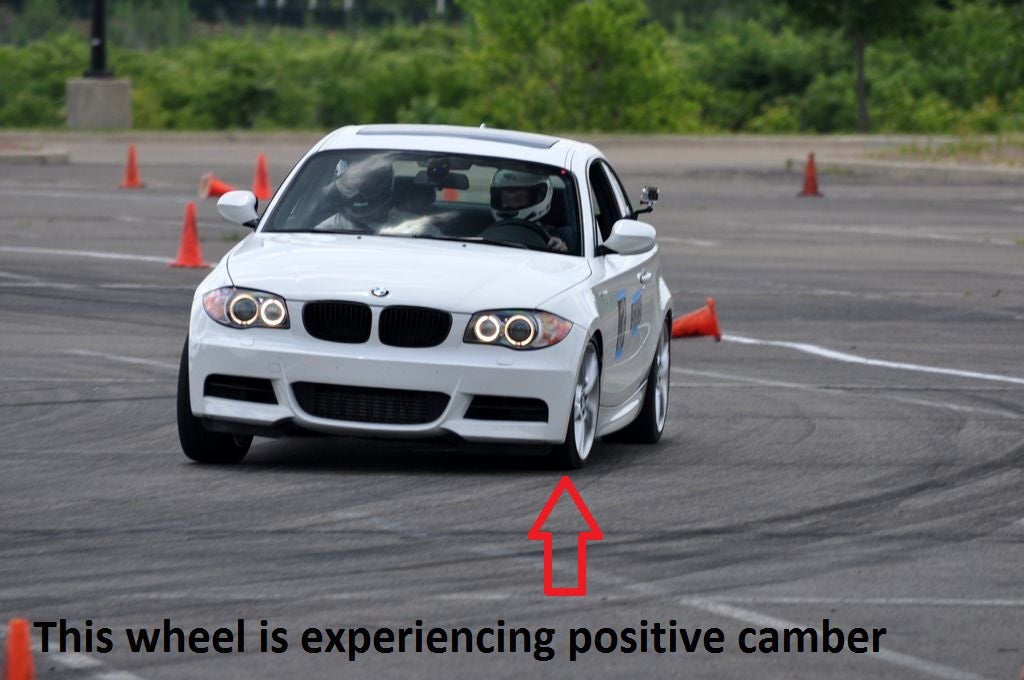
Autocrossing my car with stock suspension.
As my carís front suspension went through itís available travel, it went beyond the limited negative camber gain that there was to receive, and the wheelís camber curve changed, resulting in positive camber. However, note what the inside is doing. Itís doing very little is what itís doing. The inside corner of the car has gone light, meaning that the tire is supporting very little load.
This is where a swaybar, or anti-roll bar, comes into play.
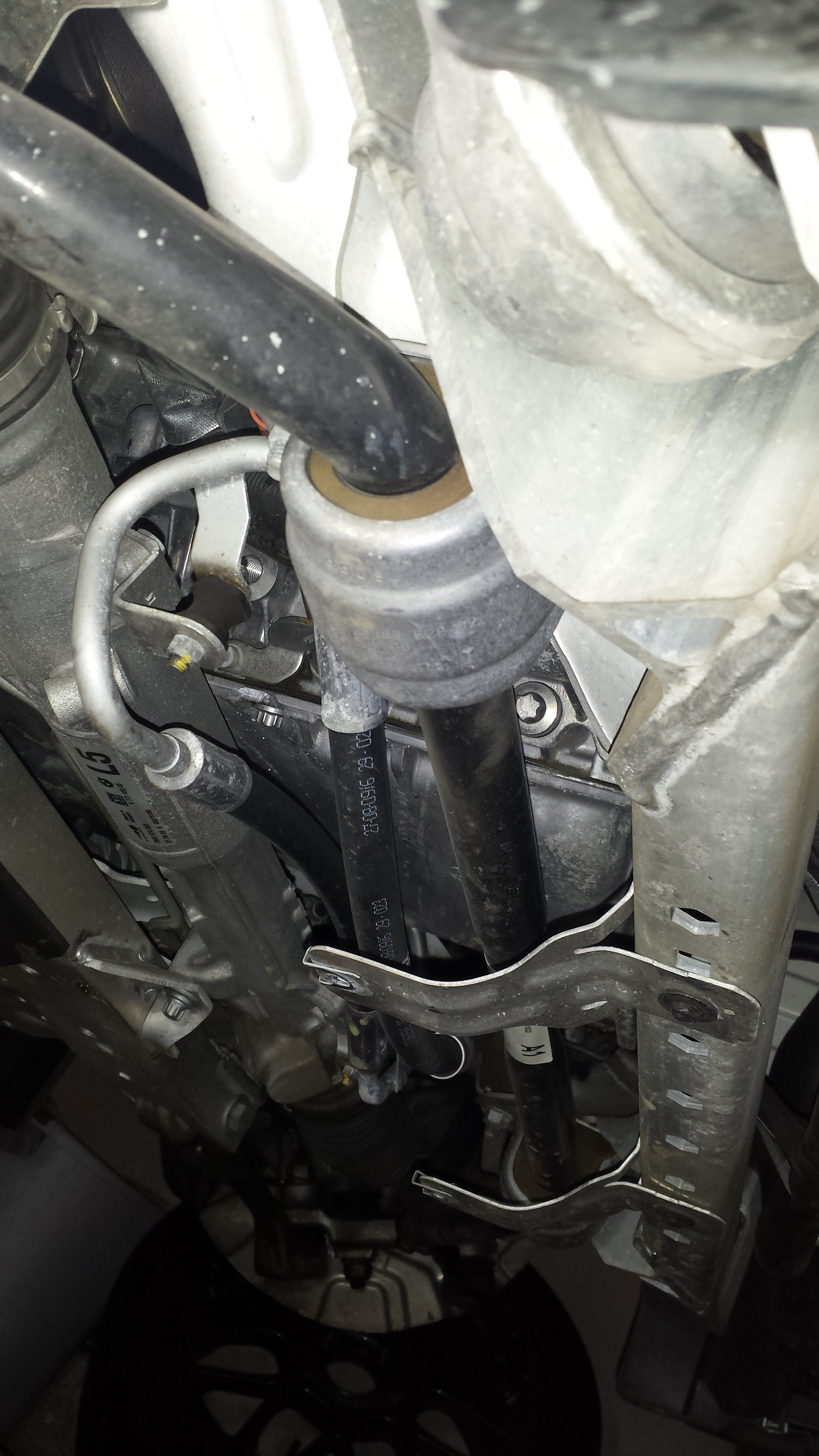
A swaybar literally links the left and right suspension components together with a sturdy bar, in an effort to reduce roll (hence the name). With a big enough sway bar, the load experienced by the outside wheel can be transferred to the inside wheel that would otherwise have gone light. Generally speaking, the bigger the bar is, the stiffer it is, and the better able it is to transfer load from wheel to wheel.
Reduced cornering loads to the outside wheel is most commonly seen as a reduction in body roll, or lean. With reduced lean, a McStrut car is less likely to enter the ďbadĒ part of the dynamic camber curve. So a big sway bar helps keep a McStrut carís limited negative camber in check, meaning that the front tires are better able to cope with roll, meaning more front wheel grip.
A sway bar also has the benefit of acting like additional spring rate as the car leans. What this means is that a car with moderate spring rates, and a good sway bar, can have comparable roll and lean characteristics to a car with very stiff springs, but no sway bar. Having a softer actual spring rate means that the car is more composed over bumpy and rough surfaces, meaning that the car would have more grip and available traction versus the more stiffly sprung car.
However, by linking the left and right sides of the car together with a firmer bar, the suspension in effect becomes less independent. On a car with no sway bar, an impact to the right wheel would be absorbed only by the right strut, leaving the left strut fully compliant. With a stiff sway bar, the load of the impact is dispersed between the two struts more evenly, so having only one wheel hit that bump would affect the chassis almost as if both wheels hit it at once. This not really an issue for road racing or autocross, but if youíre offroading or rallying, sway bars are usually the first suspension component to be removed entirely.
!!! UNKNOWN HEADER TYPE (MULTI-LINE BREAK?) !!!
For E82/E90 folksí reference, this car has a race weight of 3400lbs, and uses 255 section width street tires. I am using a 26mm sway bar with 400lb front springs and 700lb rears. With this combination, I would not recommend any additional front spring rate or bar without a serious uptick in front tire grip.
So, less body roll, better dynamic handling behavior and tire control, and sharper front end response. All of these are things that will greatly aide the handling of your BMW.
This all sounds great, and fortunately, installation is easy.
1. Jack the car up and put it on stands.
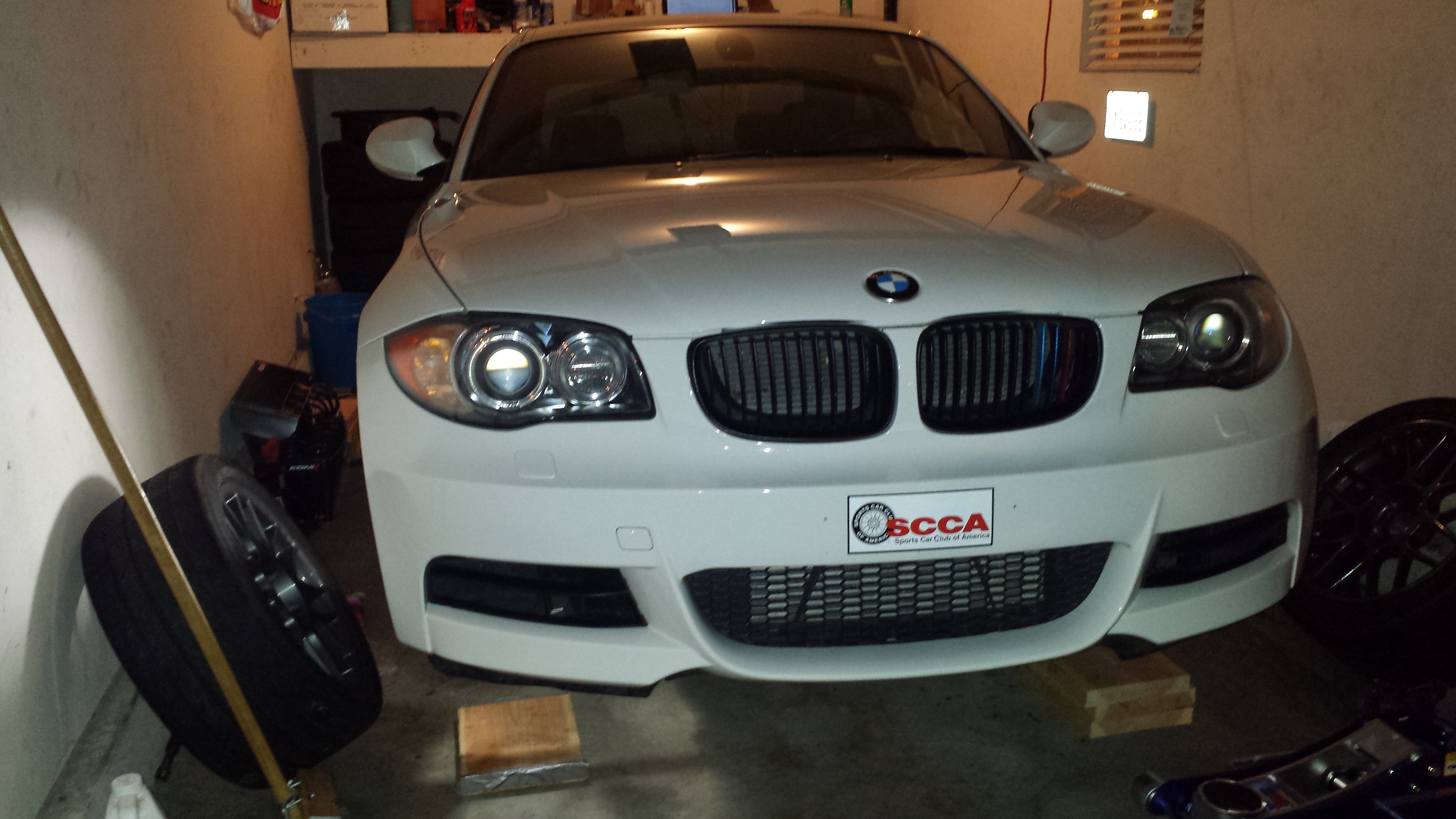
2. Remove endlinks.
These are literally the links between the struts and the ends of the sway bar. Use your trusty 17mm socket and 17mm wrench and get Ďer done. Tighten spec is ~40ft./lb. so itís not hard work.
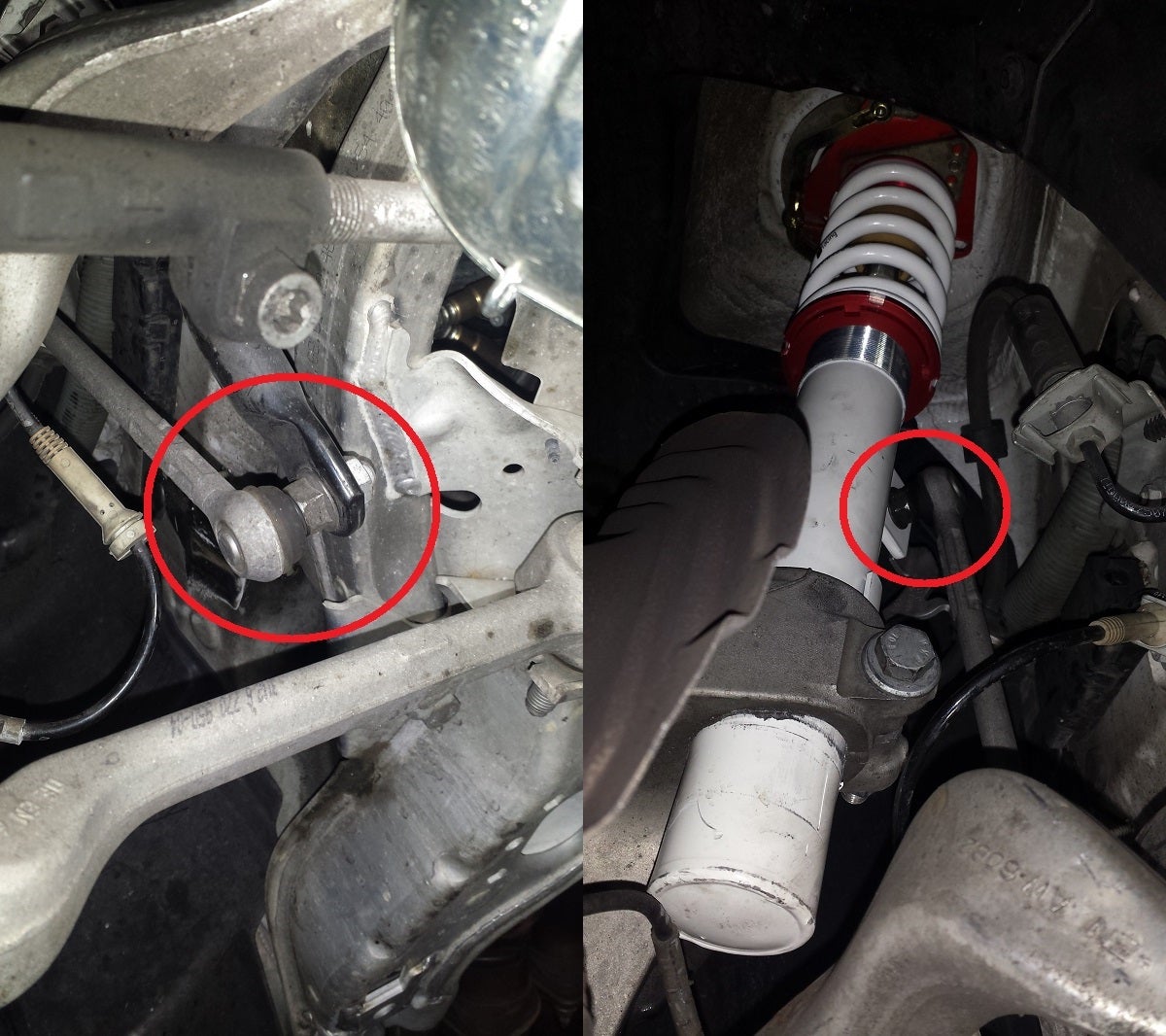
3. Undo chassis mounting.
Again, pretty straight forward, the sway bar is secured to the front subframe via two U-bolt style collars with rubber bushings. Remove them, and the bar should be free to drop down and out. I want to say that they are 14 or 15 mil.
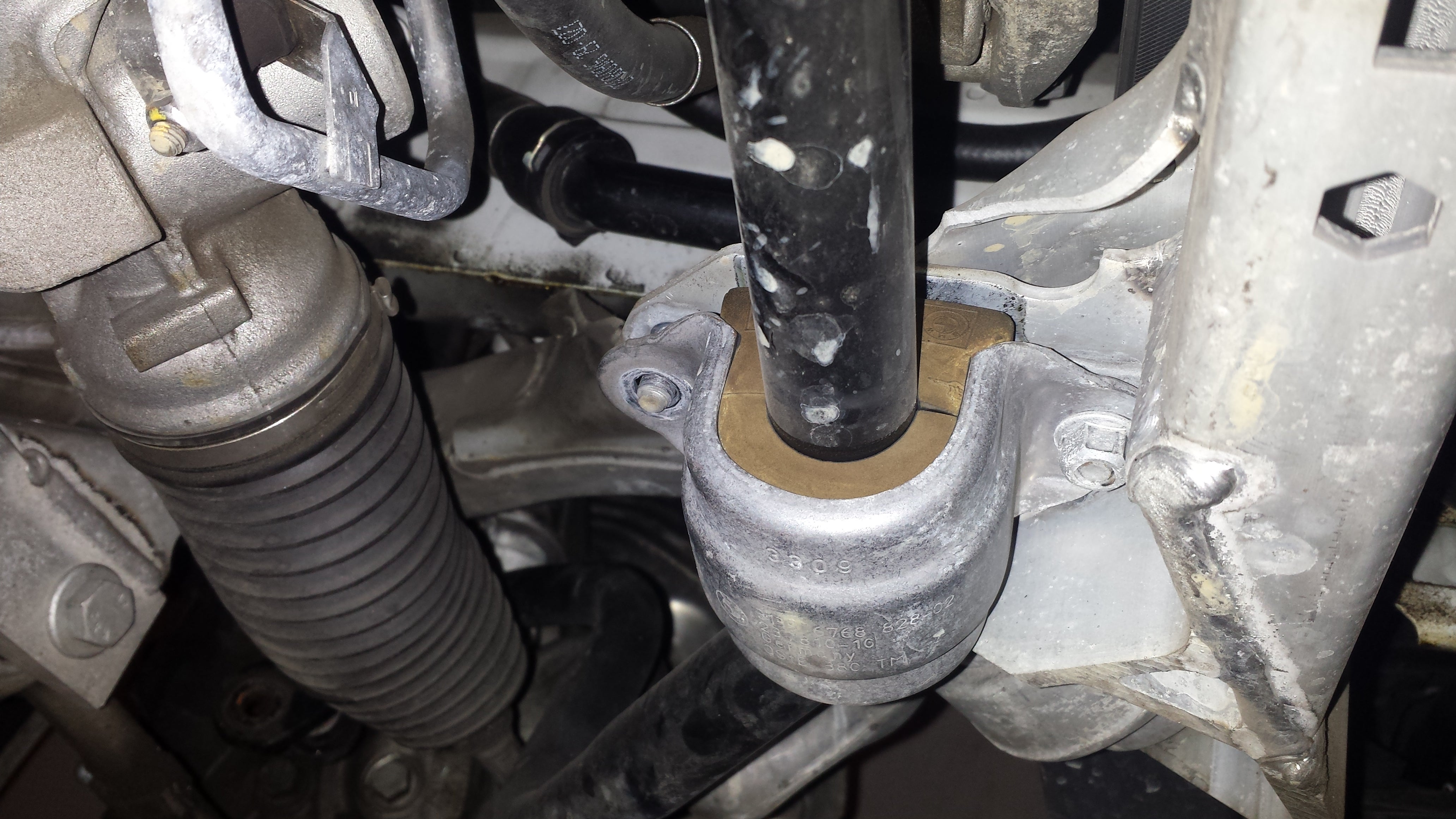
4. Gawk at the new toy.
Bigger is better. ;) Oh yeah, and red is the fastest color.

5. Reassembly
Pretty much the opposite of removal, with one caveat.
When installing swaybar endlinks, they need to be tighten with the suspension under load (i.e. sitting on the ground, with the wheels not hanging in the air). This is done to remove abnormal preload on the bar, and ensuring that the bar responds as intended when the car is leaning. If the preload isnít set up right, the sway bar and endlinks can clunk over bumps as the bar is putting uneven load on the links side-to-side.
So, how do you tighten the endlinks if the car is on the ground? How do you even get under the car? Hereís my top tip for that one: use wood blocks like a plinth.

With everything bolted up, drop the car down, and youíre done.
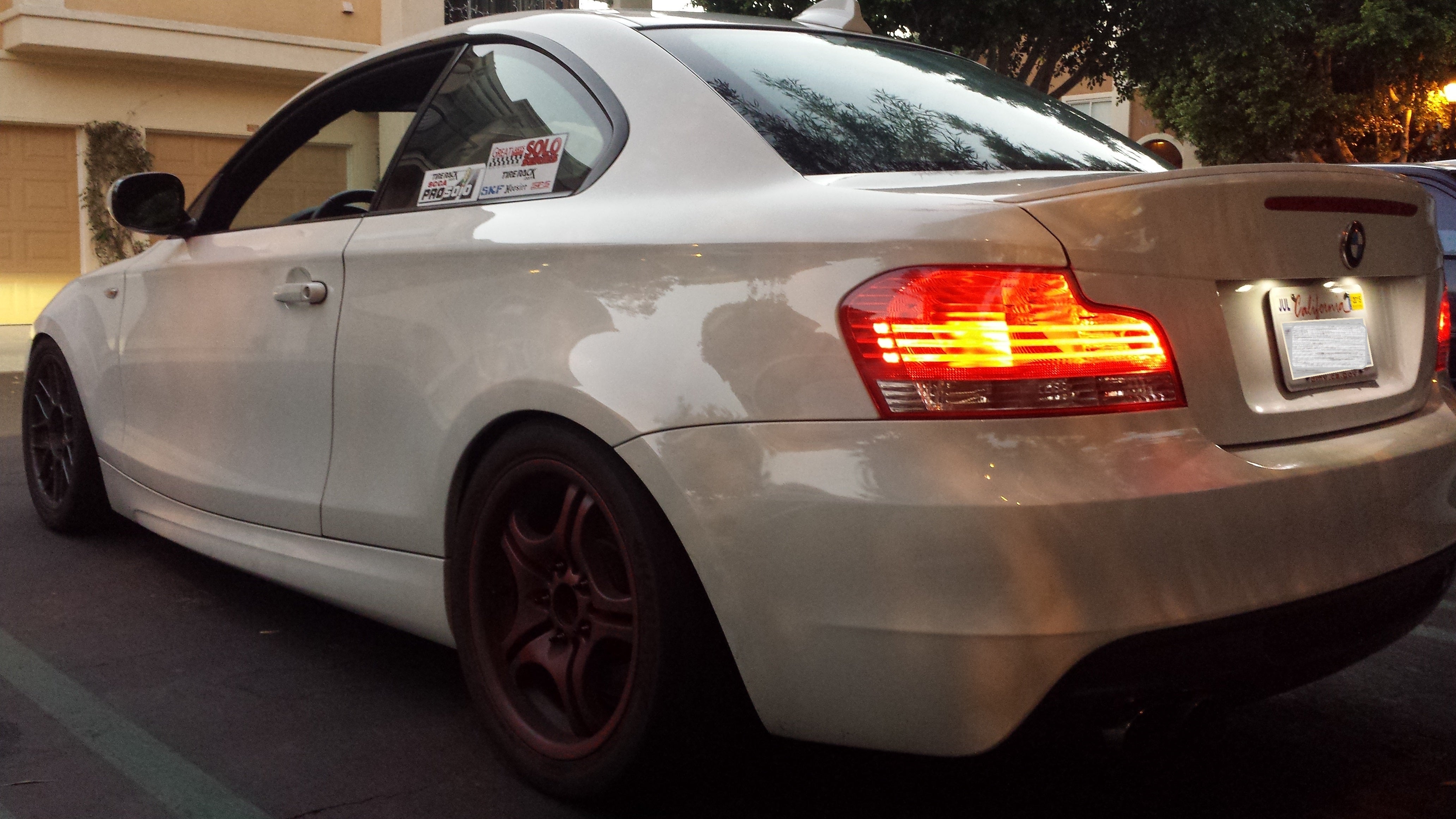
Congrats! The car now rolls less, has a better dynamic camber curve, better steering response and is generally more fun with limited, if any, down sides.
In conjunction with the !!!error: Indecipherable SUB-paragraph formatting!!! the car feels excellent. Enough compliance for a street car, but stiff enough when it needs to be. Hopefully youíve learned something about setting up your car for superior handling. My rants and raves here apply to just about any car with a McStrut front end, from rental to race car, so use my insights as you see fit. My full BMW suspension setup diatribe is coming soon, so stay tuned for that, as it covers my philosophy in how I set my car up, and how similar cars can be setup.
Jake Stumph is a freelance writer and notable Southern California track day bro. When people ask him to help with their cars, his go-to reply is that ďIím not an engineer, but Iíll take a look anyway.Ē If you find his posts informative, amusing, [insert adjective here] then you can follow him on
!!!error: Indecipherable SUB-paragraph formatting!!!
, where he posts track-side commentary, pictures and additional rants and raves.
 505 - morphine not found
> Jake Stumph Racing
505 - morphine not found
> Jake Stumph Racing
10/01/2015 at 09:34 |
|
You cal that ROLL ?! I show you roll.
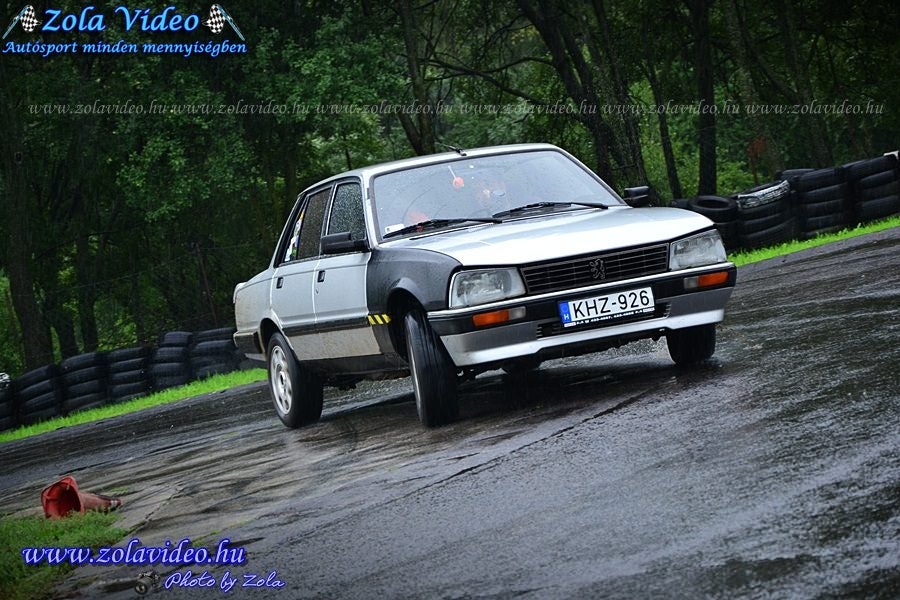
And yes, the 505 has both front and rear stabilizers. Itís just that things were done a bit differently, 30 years ago.
 RamblinRover Luxury-Yacht
> 505 - morphine not found
RamblinRover Luxury-Yacht
> 505 - morphine not found
10/01/2015 at 09:38 |
|
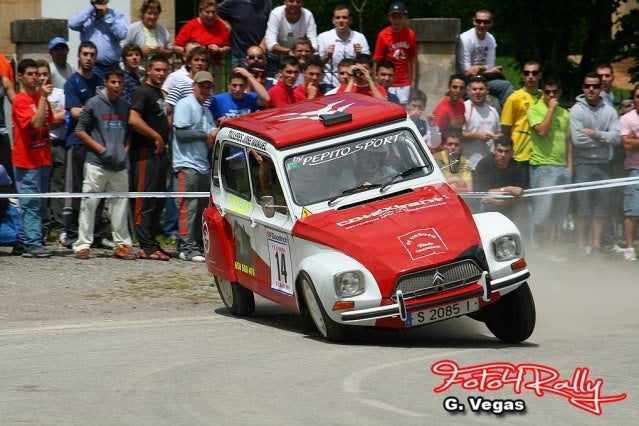
lol roll
 Nibby
> Jake Stumph Racing
Nibby
> Jake Stumph Racing
10/01/2015 at 09:40 |
|
YOU WANT BODY ROLL? BUY A COROLLA
 505 - morphine not found
> RamblinRover Luxury-Yacht
505 - morphine not found
> RamblinRover Luxury-Yacht
10/01/2015 at 09:42 |
|
I know the 2cv / dyna suspension takes a lot of roll, but this looks to me like heís just about to get #Orloved
 Urambo Tauro
> RamblinRover Luxury-Yacht
Urambo Tauro
> RamblinRover Luxury-Yacht
10/01/2015 at 10:08 |
|
Dat camber, tho...
 Santiago of Escuderia Boricua
> Jake Stumph Racing
Santiago of Escuderia Boricua
> Jake Stumph Racing
10/01/2015 at 10:13 |
|
I want to take the one on my ralle36 off, but it already has so much body roll...
 Chris_K_F drives an FR-Slow
> Jake Stumph Racing
Chris_K_F drives an FR-Slow
> Jake Stumph Racing
10/01/2015 at 10:45 |
|
Sway bars are likely going to be the next mod to my FR-S.
That or a suspension upgrade. Still trying to decide between a TRD spring/Koni adjustables combo or SACHS coilovers.
 Needmoargarage
> Jake Stumph Racing
Needmoargarage
> Jake Stumph Racing
10/01/2015 at 10:47 |
|
I see your BMW roll and raise you my (very worn-out) Miata.
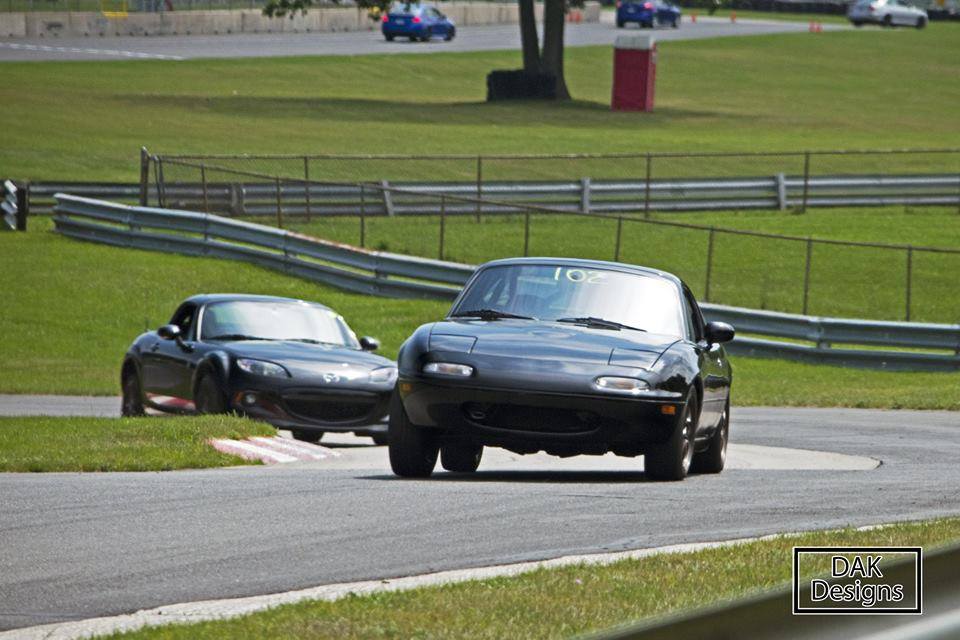
In all seriousness, good article!
 michael bleggi
> Jake Stumph Racing
michael bleggi
> Jake Stumph Racing
10/01/2015 at 10:52 |
|
just curious.. why so quick to suggest only a front swaybar? for some reason, iíve been under the impression that a rear bar is much more worthwhile....... higher spring rates/stiffer sway bars in the front induce understeer, and in the rear induce oversteer. cars from the factory are usually set up in an understeering fashion for safety reasons, and bmw rear swaybars stock are usually very small. so wouldnít it be a bigger step towards neutral handling to upgrade the rear?
 Jake Stumph Racing
> michael bleggi
Jake Stumph Racing
> michael bleggi
10/01/2015 at 13:39 |
|
Saying that a front bar increases understeer and a rear bar increases oversteer is too much of a simplification.
The rear uses a multilink suspension, that doesnít have the same inherent compromises as the front suspension (i.e. dynamic camber change). A Strut front suspension needs all the roll stiffness it can get to overcome itís inherent deficiencies. With a RWD car using struts up front, many people often notice an increase in handling neutrality, because the outside tire is no longer losing contact with the pavement.
Regarding adding a rear bar to a stock-ish BMW, I donít recommend it. Most BMWís have open diffs. If throw a big bar in the rear youíll experience a ton of inside wheel tire-fire. Energy goes through path of least resistance, and with an open diff, and too stiff of a suspension, that means the inside tire. When I initially went with coilovers and the heavy spring rates, I still had the stock open diff. Even without a rear sway bar upgrade, the increased spring rates and lowered ride height alone were enough to seriously reduce corner exit traction, especially on bumpier tracks like Streets of Willow. The car was a serious handful that day.
Remember, suspension stiffness should be proportional to available tire grip. With an open diff, rear tire grip on corner exit is poor at best.
If you have LSD, then itís a great upgrade, and one thatís on my to-do list. However, for E82/E90 cars, you have to drop the subframe to replace the rear bar, and thatís a lot of work, so Iíve put it off for the time being.
 Jake Stumph Racing
> Needmoargarage
Jake Stumph Racing
> Needmoargarage
10/01/2015 at 13:41 |
|
Your car has double wishbones, so not as much of an issue. That said, yes, judging by that picture, a good sized front bar would benefit you. With Miatas itís pretty common to run aftermarket front bar and no rear bar at all.
 Jake Stumph Racing
> Chris_K_F drives an FR-Slow
Jake Stumph Racing
> Chris_K_F drives an FR-Slow
10/01/2015 at 13:42 |
|
Pick your springs and shocks first. Sway bars are a tuning tool for balancing the car out after spring rates and shock tuning has been setup.
On a prior car, I did front and rear bars, and then added coilovers later, only to find that the balance of the car was garbage. Had to remove the rear bar and put on a different one to get it right.
 Chris_K_F drives an FR-Slow
> Jake Stumph Racing
Chris_K_F drives an FR-Slow
> Jake Stumph Racing
10/01/2015 at 13:44 |
|
Well the debate is over whether Iíd modify the springs/shocks at all in the long run. I have a feeling Iím going to. The bigger debate is going mild with the spring/shock combo or getting the coilovers.
 Needmoargarage
> Jake Stumph Racing
Needmoargarage
> Jake Stumph Racing
10/01/2015 at 15:36 |
|
True...Iíve driven one with a beefy front bar and no rear and it actually felt pretty balanced. I was running my car stock for practice, waiting for something to break. Last track day I blew a strut and now have an excuse for all my recent purchases (Coil-overs, sways, end-links, chassis reinforcement, etc)
 Master Cylinder
> Jake Stumph Racing
Master Cylinder
> Jake Stumph Racing
10/01/2015 at 18:22 |
|
Good article! I thought it was well-written and explained the pertinent suspension design information nicely.
Upping my 944ís front bar from 25.5mm to 26.8mm was a nice improvement. Soon to be installed are 200lb/in springs in the front and I just finished installing 26mm rear torsion bars, which have about a 195lb/in effective rate at the wheel. Iím going to finish it all off with a 19mm adjustable rear swaybar so I have some tunability.
I agree with you that the front bar tends to be the more important one, especially since most cars have McPherson suspensions up front.
 michael bleggi
> Jake Stumph Racing
michael bleggi
> Jake Stumph Racing
10/01/2015 at 18:53 |
|
ahh okay i understand what youíre saying. i didnít realize you were talking about completely stock cars. I guess iím too used to hanging around bmw owners whom all have lowered and uprated their suspensions to an extent that our front wheels donít travel enough to move too far from the dialed in camber settings lol.
So, in a case like mine, with a lowered bmw, camber plates, bump steer plates, upgraded control arms, poly or harder than stock bushings, springs, adjustable struts, lsd, etc... would you still think a front sway bar would be beneficial? I was always under the impression that retaining some independence between the front wheels is useful. If they are each sprung heavily and body roll is not really a concern, and camber being much less dynamic, what benefits are there to linking the front wheels together more directly?
in my e34, the rear trailing arms and poor dogbone design leaves with a ton of dynamic toe. you can tell by the tire wear.... it looks like iíve been running 15* of negative camber. it can be corrected when lowered, however, it remains very dynamic. is this something that is worth correcting? something that an upgraded rear swaybar would aid?
 Jake Stumph Racing
> michael bleggi
Jake Stumph Racing
> michael bleggi
10/01/2015 at 19:47 |
|
This is where things get murky. Your car sounds like itís set up similarly to mine, i.e. adjustable coilovers, camber plates, fat tires, etc. I still find the bar very useful in mitigating poor front tire wear, but YMMV. The Hankook RS3 tire I use is very sensitive to camber and roll.
As far as the rear suspension on the E34, sounds like it suffers from a similar issue as these cars. The rear subframe is mounted via rubber bushings, which is a pretty conventional solution. However, the issue is that the factory bushings are so soft that the rear subframe has a lot of slop in it. For exmaple, if I wedged a crowbar in the voided portions of the subframe bushing, I can move the subframe ~1/4Ē in either direction. Now, Iím strong, but Iím not crazy strong. Imagine the forces exerted on the rear suspension under load. This results in a a lot of subframe movement, a consequence of which is dynamic toe change. In this case, the car experiences a massive swing of toe out in the rear suspension under braking. That makes the car twitchy under threshold braking, and results in less than optimal wear, much like you are describing.
I know these cars arenít apples to apples, multilink versus trailing arms, but have you upgraded the bushings? The foundation of the suspension (i.e. the mounting points) need to be as rigid as possible to ensure consistent performance under the majority of circumstances.
Basically, check your bushings.
 Que
> Jake Stumph Racing
Que
> Jake Stumph Racing
04/07/2018 at 00:03 |
|
Jake, great article. Just picked up a 128i base m sport suspension in manual with no sunroof or power seats, so lightest trim... coming from an E39 530i M sport, I find the E82 so imbalance in stock form. ton of understeer everywhere on just street speeds. Did you consider doing the front LCA from E9X and fix chamber plates from Dinan to gain chamber in the front? I plan to track on occasion, but want a neutral car for the street, maybe hint of understeer at the limits, or hint of oversteer on heavier throttle inputs. Have not taken the E82 on the track planning/preparing for it. Noticed when I used to take my stock E39 on the track, it was quite well balanced in stock trim. planning on doing the rear E9X subframe bushings. Dampers and springs will be later on the list, as I do it in step to see gains or losses. Leaning towards Bilsteins B6/B8 with stock springs, or B12/14 combo, and not too sure about the sway bars just yet. will my dreams of balance on the E82 can be achieved, or am I asking too much? also tires got a set of style 44 that are 17x8 with 47 offset, on the fence to go 225 45r17 or 235 45 r17 in MPSS or new 4S. any guide would be greatly appreciated.
 dudr13
> Jake Stumph Racing
dudr13
> Jake Stumph Racing
02/14/2019 at 20:14 |
|
FWIW, cars with McPherson fronts actually reduce understeer with a thicker front sway.
http://www.m3forum.net/m3forum/showthread.php?t=181665